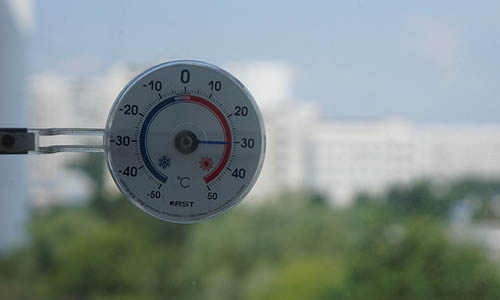Why are summers so hot? Why does water boil? Why do ice creams melt?
The most obvious answer to these frequently asked questions is heat.
Heat plays a very important role in our lives, and life on this planet would have been impossible if not for the presence of heat.
The ten facts given below, explain the need and importance of heat.
1. Rather than a substance, heat is actually a transfer of energy.
Heat is produced in matter due to the movement of their atoms. When atoms move, kinetic energy is produced. It is this energy that is transferred from one object to another.
2. A heat wave is a prolonged period of excessive heat along with humidity.
Heat waves refer to a period of extremely hot weather conditions. In countries with oceanic climate, effects of heat are more intense due to the humidity present in air. Such heat waves cause catastrophes and may even result in death of humans.
3. Heat energy is also called thermal energy.
The word “thermal” originated in 1756 from the Greek word “therme” meaning heat. Heat energy is thus also called thermal energy.
4. There are 3 methods by which heat gets transferred.
Conduction: In this method of heat transfer, the agitated molecules collide against the slower, less excited molecules and transfer their energy to them, thus resulting in the conduction of heat energy.
Convection: It involves the transfer of heat within the large mass of a substance due to its internal temperature differences.
Radiation: Heat transfer that occurs due to the rays of the sun is called radiation.
5. Hypothermia is a condition that arises due to loss of heat from the body.
In general, the body maintains an optimum temperature required for its normal functioning and is called homeostasis. When the temperature of the body drops, the homeostatic balance of the body is disturbed and may thus prove to be harmful. Hypothermia refers to a condition where the body loses heat faster than it can produce heat.
6. Young adults and children are most likely to get affected by the effects of heat.
Children are more likely to be affected by drastic effects of heat as their bodies cannot easily adapt to changing temperatures. This can be prevented by drinking a lot of water to avoid dehydration.
7. The inside of a cucumber is about 11 degrees cooler than room temperature.
This coolness is believed to be created due to the presence of a chemical inside a cucumber. Further, the gelatinous photolyctin around the seeds acts as a heat sink. A cut cucumber may however reach normal room temperature when kept outside for a long time.
8. Excessive heat is determined by heat index value.
The heat index value, also known as apparent temperature is a measure of heat on the body. The table is plotted for the effects of heat on the human body with variations in temperature and humidity.
9. Heat energy causes melting.
Melting occurs due to the transfer of heat energy from an object at higher temperature to one at lower temperature. The object at lower temperature absorbs the heat resulting in change of its physical state.
10. Heat and temperature are not the same.
Temperature is not energy, but simply the measure of hotness or coldness of a body. Heat however, refers to the energy present or transferred to a body.











Leave a Reply